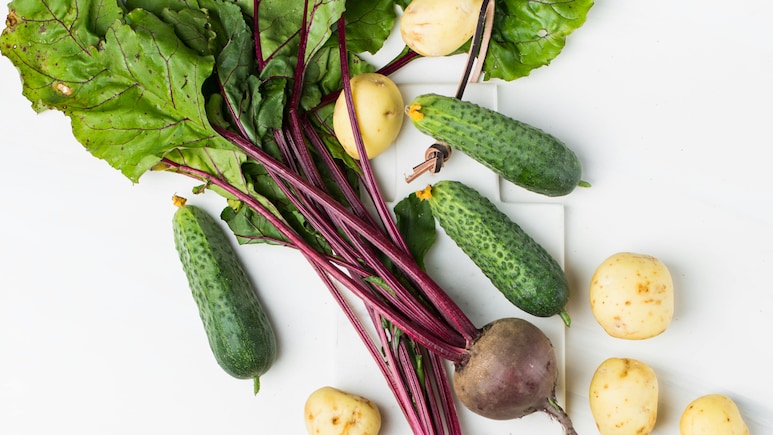
There's a strong possibility that we might be cooking some Indian vegetables in ways that reduce their nutritional value or diminish their health benefits. Overcooking, deep-frying, or using excessive oil, spices, and prolonged boiling can destroy heat-sensitive vitamins (like vitamin C and B-complex) and strip away antioxidants and fibre. In traditional cooking, while taste often takes centre stage, nutrition may unknowingly take a backseat. Understanding the best cooking methods for each vegetable ensures we get the most from these nutritious Indian staples. Below we share if you're cooking these Indian vegetables wrong.
Indian vegetables you might be cooking wrong
1. Spinach
Many people boil or overcook spinach, which leads to a significant loss of iron, folate, and vitamin C. Instead, blanching it quickly or lightly sautéing with minimal oil helps retain its nutrients and vibrant green colour. Adding lemon after cooking improves iron absorption.
2. Bottle gourd
Often cooked into mushy gravies or over boiled, bottle gourd (lauki/doodhi) loses its water-soluble nutrients this way. A better option is to steam or stir-fry it lightly. Pairing it with light spices and herbs preserves its cooling and digestive properties.
3. Bitter gourd
To reduce bitterness, many people deep-fry karela or soak it in salt for too long, which removes its valuable compounds. Instead, cook it with a minimal amount of oil or bake it to retain the blood-sugar-lowering benefits without turning it into empty calories.
4. Okra
Bhindi is often over-fried to reduce stickiness, which causes nutrient loss. The trick is to pat it dry before cooking and stir-fry with minimal oil on medium heat. This helps retain its fiber and vitamins A and C while keeping it crisp, not greasy.
5. Cabbage
Cabbage is usually cooked with heavy spices and long cooking times, which destroys its anti-cancer glucosinolates and vitamin C. Light stir-frying or steaming it preserves its crunch and nutrient content. Avoid covering it tightly while cooking.
6. Cauliflower
Many people overcook cauliflower until it becomes soggy and tasteless. This not only ruins its texture but also depletes its antioxidants and vitamins. It's better roasted or steamed lightly with turmeric and pepper to boost absorption of its anti-inflammatory compounds.
7. Carrot
While carrots are often used in gravies or boiled, they're actually more nutritious when lightly steamed or stir-fried. Avoid peeling them too deep, as many nutrients lie just under the skin. Cooking with a small amount of fat (like ghee) helps absorb beta-carotene better.
8. Drumstick
Drumsticks (moringa pods) are often boiled extensively in sambar or curries, which can leach out their nutrients. To retain their calcium, iron, and antioxidants, try steaming or adding them toward the end of cooking. The leaves can also be stir-fried instead of over boiled.
9. Beetroot
Boiling beetroot for too long reduces its natural sweetness and strips away its betalains, which are powerful antioxidants. Roasting or steaming helps preserve its earthy flavour and nutrients. Even grating it raw into salads can be an excellent option.
By adjusting how we cook these commonly used Indian vegetables, we can retain more nutrients, reduce unnecessary calories, and support overall health without compromising flavour. Smart cooking is not just about taste, it's about making every bite count nutritionally.
Disclaimer: This content including advice provides generic information only. It is in no way a substitute for a qualified medical opinion. Always consult a specialist or your own doctor for more information. NDTV does not claim responsibility for this information.
Track Latest News Live on NDTV.com and get news updates from India and around the world

